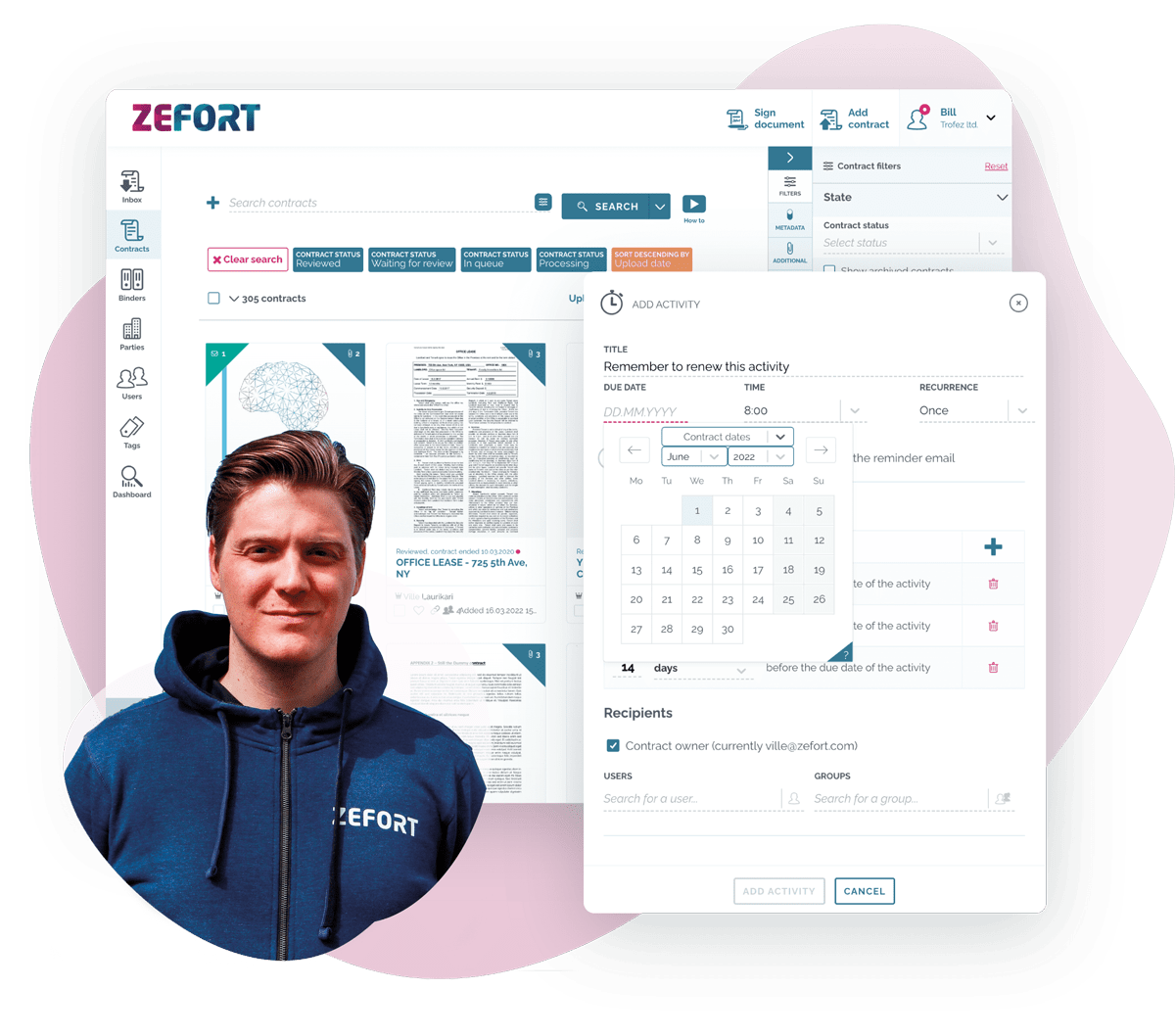Contract redesign solves your ‘garbage in, garbage out’ problem
This is a guest post by Hannele Korhonen, Founder and Legal Designer at Villa Verto
You know that feeling when you’re looking at the perfect technology demo and the product seems to solve all of your problems at once?
While you know that this is too good to be true, at the same time you ignore that notion and venture into buying the product. If you’re anything like me, the mere thought of getting a long-waited tool to improve your contracting processes gets you excited. After six months of implementation, the tool is nicely implemented but you’re still waiting for the efficiency gains to kick in. You are left wondering what happened (and you possibly blame the technology).
Here’s the hard truth. Technology cannot fix bad content.
You may very well have a productivity challenge, meaning that your contract processes are inefficient and they are taking too much time for all parties involved. Most likely you have much room to improve here. But in order to really solve the problem with your contracts, you must dig deeper.
One of the biggest pain points with contract processes is that lawyers are put as gatekeepers with all matters concerning contracts. At the same time, one of the biggest needs for legal technology is to enable business owners or customers to do more themselves. To create, negotiate, conclude and implement contracts themselves without lawyers.
So imagine that this is the outlined problem and need. And you try to solve it once and for all with implementing a shiny technology to automate your process. You just jump right into the solution that is easily available, buyable from someone so that you would not need to change anything that you are doing. You implement your existing old contracts into the finely automated process.
This phenomenon is called garbage in garbage out*. Garbage in this context refers to the content of the contracts that is dysfunctional, confusing and complicated. A contract is a huge pile of pages of the main document, appendices and other attachments with no clear structure. The language is full of legal jargon and outdated phrases. The text is written in long boring chapters and sentences of black text with no rest for your eyes with pauses or visual elements. In general there is nothing that would make the business owner understand and feel that this actually applies to me and my work and that I own this content.
It’s easy to see that buying and implementing a perfect automation solution for contracts that are still garbage does not help to get the ultimate gains you are looking for. If the business owner could not understand the contract before, the technology that works with the same content does not solve this for her.
What to do instead?
You need to work with the content first and the technology comes second. Your contracts need to be redesigned first to make them simple, user friendly and better functioning tools for their users.
Contract redesign means reimagining your contracts from the user’s point of view. It is about improving the user experience of your contracts. Redesign makes the contracts easier to navigate and use and it removes ambiguities. You are also able to close the contracts faster and make sure that all contract benefits are realised. Ultimately contracts that are well designed improve efficiency and reduce costly risks.
All this redesign work is done with close co-operation with the users. They will get the sense of ownership and empowerment over their own contracts. Pretty ideal, huh?
Don’t get me wrong. I warmly recommend you to take the advantage of legal technology in improving your work. Just don’t expect the technology alone to solve all the problems for your contracts. Technology can be the cherry on top but not the starting point. Starting with the content first pays off. And it’s fun too.
*See the work of e.g. Kenneth Adams, Stefania Passera and Helena Haapio.
Hannele Korhonen
Founder and Legal Designer at Villa Verto and Blogger at somethingsimplefirst.com
Hannele is an ex-lawyer, pioneer in legal tech and she consults legal teams with redesigning
their legal work and legal services. She teaches legal design in her Lawyer’s Design School.





